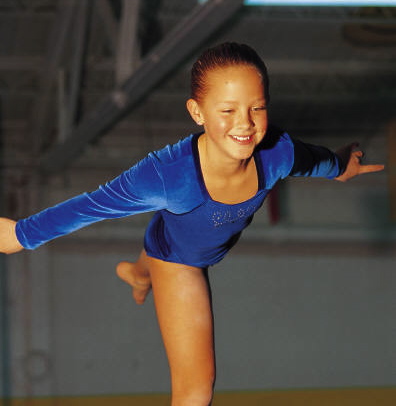
How is Your Balance? The Development, Deterioration, and Exercises to Improve Balance and Prevent Injury: Part 1
Balance is a state of equilibrium or equal distribution of body weight. Some people, such as gymnasts or performers in Cirque du Soleil, have impeccable balance. In other people, balance is so poor they cannot balance on one leg for more than a few seconds. In part one of this two part article we will discuss the development and deterioration of balance and the risk of injury associated with poor balance.
The Development of Balance
We are not born with balance. Balance is something we develop from the first few months of life until the age of four. When we are born, we have virtually no motor skills, or coordination of movement. We go through very important stages of motor development called milestones. Babies start on their back moving their eyes, neck, arms and legs. Then they begin to roll onto their stomach, creep, crawl, sit, kneel, stand, walk, and eventually run. Each of these milestones are critical for normal motor development and each stage sets the foundation for the next milestone. During this entire process the nervous system is gaining more motor control of muscles that coordinate balance and movement. The process involves a lot of shaking, wobbling, and many falls until the nervous system and muscles work it out and become completely coordinated. By the age of four, the majority of us have well-developed motor skills that leave us with good balance and coordination.
The Deterioration of Balance
Balance is something that can be lost very easily to injury, misalignment, pain, poor movement habits, too much of one activity or too little of another activity. There are many other causes of poor balance, such as circulation problems, nervous system disorders, or dizziness due to an inner ear problem (positional vertigo), or side effects from medication. The scope of this article is to discuss balance problems related to injury and misalignment.
An injury to a muscle, tendon, joint or ligament can damage specialized nerve receptors responsible for keeping the brain aware of position, balance and movement. Damaged “balance receptors” can result in poor balance. Injuries, including bone and joint misalignments, can also cause tightness and stiffness in the immediate area or an area distant to the site of the injury or misalignment. A good example is someone who sprains an ankle. The misalignment of the ankle bones and damage to the ankle ligaments may not only cause tightness of the muscles around the ankle, but may also result in tightness in the hip. This tightness and loss of joint mobility alters perception in these areas resulting in poor balance.
Some people can fully recover from an injury without a deterioration of balance. In other people, poor balance is the result of an injury that does not receive proper chiropractic treatment and rehabilitation. As a side note, misalignments usually do not resolve on their own without chiropractic adjustments and corrective exercises.
The Sad Statistics of Poor Balance
Poor balance can increase the risk of injury, especially in sports or other exercise-related activities. In seniors and the elderly, poor balance contributes to falls, the leading cause of fatal and non-fatal injuries in the United States. More than one-third of adults over the age of 65 fall each year and approximately 300,000 fracture a hip. The most staggering statistic is up to one-third of hip fracture patients die within one year of their fracture. At the root of these falls in most cases is poor balance. It is estimated that 36 percent of women and 29 percent of men at age 70 have balance problems. At ages 88-90, the figures climb to 50 percent. The good news is improvement in balance and injury prevention can be accomplished with a few simple exercises.
In part two, we will discuss how to test your balance and how to improve balance with corrective exercises.


